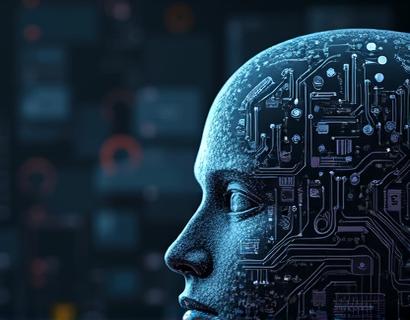UX Design Trends 2025: Mastering Digital Transformation for Enhanced User Experience
In the rapidly evolving landscape of digital products and services, UX design plays a pivotal role in driving success and enhancing user satisfaction. As we step into 2025, the field of UX design continues to evolve, influenced by technological advancements, changing user behaviors, and emerging design trends. This comprehensive guide aims to equip UX designers and enthusiasts with expert strategies, practical tips, and the latest trends to master digital transformation and elevate their UX design practice.
Understanding the Current UX Design Landscape
The UX design landscape in 2025 is characterized by a focus on inclusivity, personalization, and seamless integration of technology into daily life. With the increasing use of AI and machine learning, UX designers are leveraging these technologies to create more intuitive and adaptive user experiences. The pandemic has accelerated the shift towards digital, making user experience more critical than ever. Designers must now consider not only the usability but also the emotional and contextual aspects of user interactions.
Accessibility remains a top priority, with more organizations recognizing the importance of designing for diverse user needs. The Web Content Accessibility Guidelines (WCAG) continue to guide designers in creating inclusive digital products. Additionally, the rise of voice interfaces and augmented reality (AR) is reshaping how users interact with digital content, presenting new opportunities and challenges for UX designers.
Trend 1: Emphasizing Inclusivity and Diversity
Inclusivity in UX design is no longer a niche concern but a fundamental aspect of creating effective digital products. Designers are increasingly adopting a user-centered approach that considers a wide range of user characteristics, including age, ability, culture, and socioeconomic background. This shift is driven by a growing awareness of the diverse needs of the global user base and the legal and ethical imperatives to design for everyone.
To implement this trend, designers should conduct thorough user research that includes underrepresented groups. Techniques such as co-design workshops, surveys, and usability testing with diverse participants can provide valuable insights. Additionally, using inclusive language and imagery in design prototypes and final products helps ensure that all users feel represented and valued.
Trend 2: Personalization and Adaptive UX
Personalization has become a key differentiator in the digital space, allowing users to enjoy tailored experiences that enhance their engagement and satisfaction. Adaptive UX designs respond to user behavior and preferences, providing a more dynamic and relevant experience. This trend is supported by advancements in AI and data analytics, which enable designers to create intelligent systems that learn from user interactions.
Implementing personalization involves collecting and analyzing user data to identify patterns and preferences. Designers can use this data to create adaptive interfaces that adjust layout, content, and functionality based on user behavior. For example, a news app might prioritize articles based on a user's reading history and interests, or an e-commerce site could recommend products tailored to individual shopping habits.
Trend 3: Seamless Multi-Device Experiences
With the proliferation of devices, users expect a consistent and seamless experience across all platforms. Designers must ensure that digital products are responsive and optimized for various screen sizes and input methods. This trend, often referred to as omnichannel design, requires a holistic approach to UX that considers the user journey across devices and touchpoints.
To achieve seamless multi-device experiences, designers should adopt a mobile-first design approach, starting with the smallest screens and scaling up. Utilizing design systems and component libraries can help maintain consistency across devices. Additionally, implementing progressive enhancement and graceful degradation techniques ensures that the core functionality remains accessible on all devices, even if some features are not fully supported.
Trend 4: Voice User Interfaces (VUIs)
The rise of smart speakers, virtual assistants, and voice-enabled devices has sparked a new wave of UX design focused on voice interactions. VUIs offer a hands-free, intuitive way for users to interact with digital products, making them particularly useful in scenarios where visual attention is limited or distracting.
Designing for VUIs requires a different mindset compared to traditional UI design. Key considerations include natural language processing, conversational flow, and error handling. Designers should focus on creating clear and concise voice prompts, ensuring that the conversation feels natural and engaging. Usability testing with voice interactions can help identify and resolve issues related to ambiguity and user frustration.
Trend 5: Augmented Reality (AR) and Virtual Reality (VR)
AR and VR technologies are transforming the way users interact with digital content, offering immersive and interactive experiences that blur the lines between the physical and digital worlds. These technologies present exciting opportunities for UX designers to create novel and engaging experiences, from virtual try-ons to immersive training simulations.
When designing for AR and VR, designers must consider the unique constraints and capabilities of these mediums. This includes optimizing for low latency, ensuring spatial awareness, and designing for comfort and safety. User testing in real-world scenarios is crucial to validate assumptions and refine the user experience. Additionally, accessibility in AR and VR is an emerging area that requires attention to ensure these experiences are inclusive.
Trend 6: AI and Machine Learning in UX
AI and machine learning are revolutionizing UX design by enabling more intelligent and adaptive systems. These technologies can analyze vast amounts of data to uncover insights, predict user behavior, and automate design processes. For instance, AI can assist in generating design prototypes, optimizing layouts, and personalizing content at scale.
To leverage AI in UX design, designers should explore tools and platforms that offer AI-driven design capabilities. These tools can help streamline repetitive tasks, allowing designers to focus on higher-level creative decisions. However, it's important to maintain a human touch, ensuring that AI-generated designs align with brand identity and user expectations. Ethical considerations, such as data privacy and bias, must also be addressed when implementing AI in UX design.
Practical Tips for Implementing Trends in Your UX Design Practice
Integrating these trends into your UX design practice requires a strategic approach and a willingness to experiment and learn. Here are some practical tips to help you get started:
- Stay Informed: Follow industry blogs, attend conferences, and participate in online communities to stay updated on the latest trends and best practices.
- Conduct User Research: Regularly engage with users to understand their needs and preferences. Use a variety of research methods, including interviews, surveys, and usability testing.
- Adopt a Design System: Implement a design system to ensure consistency and efficiency across projects. This helps in creating reusable components and maintaining a cohesive user experience.
- Prototype and Test: Use prototyping tools to create interactive mockups and conduct usability testing to validate design decisions. Iterate based on user feedback to refine the experience.
- Collaborate Across Disciplines: Work closely with developers, product managers, and other stakeholders to ensure a aligned and cohesive approach to digital transformation.
- Focus on Accessibility: Integrate accessibility considerations from the early stages of design. Use accessibility tools and guidelines to ensure your designs are inclusive and compliant with standards.
By embracing these trends and implementing the practical tips outlined above, UX designers can drive digital transformation and create exceptional user experiences that meet the evolving needs of users in 2025 and beyond.











































